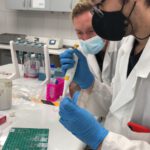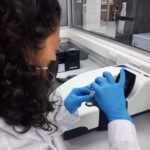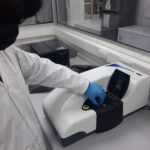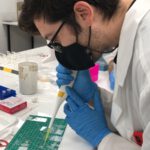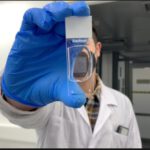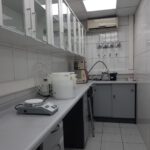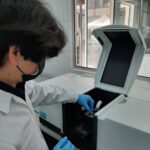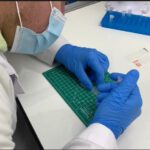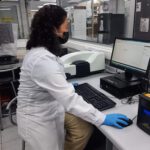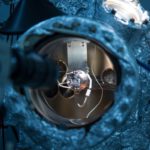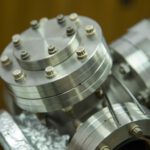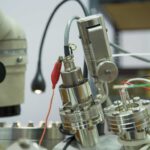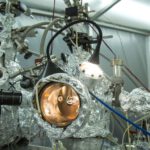Nanomaterials laboratories
In the nanomaterials laboratories we have equipment for the fabrication and growth of various nanoscopic materials, such as metallic nanoparticles, carbon-based nanomaterials (graphene, nanotubes), two-dimensional materials and organic films. We also have advanced equipment for the characterization of materials, which allows us to understand their properties and interactions with different media. In the nanomaterials laboratories we have the following equipment:
- Plasma enchanced chemical vapor deposition (PE-CVD)
- Sputtering
- Thermal physical vapor deposition
- Spin coating
- Reactive ion etching
- Scanning electron microscopy with energy dispersive spectroscopy (SEM-EDS)
- Atomic force microscopy (AFM)
- Scanning tunneling microscopy (STM)
- Scanning forcé microscopy
- Raman spectroscopy
- Fourier transform infrared spectroscopy (FT-IR)
- UV-VIS-NIR spectrometer
- Atomic Absorption Spectroscopy (AA)
- Dynamic light scattering (DLS)
- Zeta potential
Microfluidics Laboratory
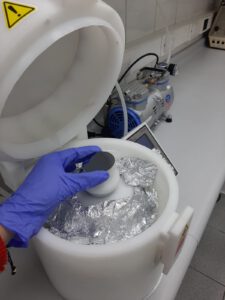
In the microfluidics laboratory (MINANO Lab: Microfluidics for Nanobiotechnology Applications) we are dedicated to the fabrication of microfluidic devices through soft lithography techniques for the study of different types of nanoparticles with multifunctional properties such as magnetic, plasmonic and fluorescent properties by means of fluid science. We study and characterize the interaction of nano-systems formed in the channels of one or several micro-devices (continuous microfluidic) with different designs and biomolecules. Our main application is nano-medicine.
Molecular simulation
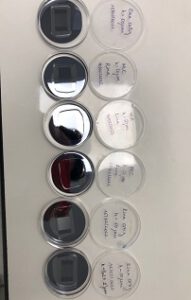
The molecular simulation branch of the Millennium Nucleus in NanoBiophysics employs a series of high performance computing (HPC) equipment for the application of numerical methods in the modeling of various systems, and the corresponding calculations of interest. To obtain our results, the computer equipment we have available are:
- SuperServer 7089P-TR4T, 128-core compute server, 768GB RAM and 5 NVIDIA Tesla GPUs.
- SuperStorage 5029P-E1CTRL12L, 80TB capacity storage server.
- ROCKS heterogeneous cluster with 220 intel and AMD cores, ~7 GB RAM per core. The cluster is connected internally by a 10G switch.
- RAID 6 NAS with 37 TB capacity.
Biophysics Laboratory
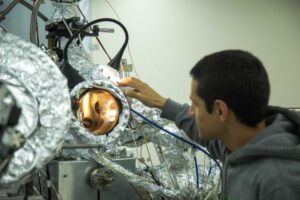
The Biophysics Laboratory, located in the Department of Neurosciences of the Universidad de Valparaíso, has first class facilities for electrophysiology as well as a place for molcular biology. There is also access to a cell culture room and a general equipment room containing centrifuges and an ultrafrezeer. It also has a facility for research animals owned by the University of Valparaíso. It also has a room especially suitable for keeping Xenopus laevis frogs. The frog facility is equipped with six 30-liter tanks that can hold up to 50 frogs. The system is equipped with a filtration system and pH, temperature and salinity controls to provide optimal conditions for the frogs.
o Patch clamp assemblies.
o Two-electrode voltage clamp (TEVC) assemblies .
o Assemblies for voltage clamp fluorometry (VCF).
o Mounts for cut-open with fluorescence.
o Molecular Biology Laboratory.

